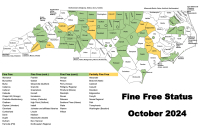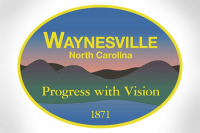Pawpaw is unique among fruits
(Editors Note: George Ellison is on leave this week. But he says that his pawpaw trees have even more fruit on them this year than they did when he wrote this about them last year.)
Way Down Yonder in the Paw Paw Patch
Where, oh where, is dear little Nellie?
Where, oh where, is dear little Nellie?
Where, oh where, is dear little Nellie?
Related Items
Way down yonder in the pawpaw patch.
Come on, boys, let’s go find her.
Come on, boys, let’s go find her.
Come on, boys, let’s go find her.
Way down yonder in the pawpaw patch.
Picking up pawpaws, puttin’ `em in your pocket.
Picking up pawpaws, puttin’ `em in your pocket.
Picking up pawpaws, puttin’ `em in your pocket.
Way down yonder in the pawpaw patch.
Have you ever happened upon pawpaw growing in the wild? One fine spring day many years ago I was exploring a steep ridge above our house. As I was pulling myself up with the aid of overhanging saplings, I was suddenly face-to-face with a cluster of some of the most curious and lovely flowers I’ve even seen. Although my only previous exposure had been via picture books, I knew for sure that these were pawpaw flowers. I’ve traversed that ridge many times since looking for that pawpaw with no luck.
The small tree or shrub known as common pawpaw, American pawpaw, tall pawpaw, or wild banana tree (Asimina triloba), has been reported from numerous counties throughout Western North Carolina. It is of interest that it was first recorded by the Hernando De Soto expedition in 1540.
Found in rich soils at elevations up to about 2,500 feet, a pawpaw tree rarely exceeds 25 feet in height and is normally more like a shrub. A smaller species known as dwarf pawpaw (A. parviflora) grows primarily to the east and south of WNC.
From early April into early May, the plant displays distinctive purple-brown flowers that have two circles of three petals which are arranged one inside the other. The broad lustrous green leaves are frequently a foot in length, somewhat resembling those of an umbrella-leaf magnolia. The greenish-gray fruits (which turn yellow and then black with ripening) develop in late summer.
The pawpaw is the largest edible fruit native to America. Individual fruits weigh five to 16 ounces and are 3 to 6 inches in length. The larger sizes will appear plump, similar to the mango. The fruit usually has 10 to 14 seeds in two rows. These brownish to blackish seeds are shaped like lima beans. Pawpaw fruits often occur as clusters of up to nine individual fruits. When ripe they are soft and thin-skinned.
About eight years ago Elizabeth planted two pawpaws about 20 feet apart on our property. Pawpaw flowers are “perfect,” in that they have both male and female reproduction parts. But they are not self-pollinating because the female stigma matures and is no longer receptive when the male pollen is shed. Accordingly, they require cross-pollination from another unrelated pawpaw tree.
For several years, we had no pawpaw fruits at all. After about four years, we started harvesting several pawpaw fruits per season — just enough for a taste. This year we have pawpaws galore! Every morning for the past week, we’ve been eating pawpaw slices for breakfast.
The sweet pulp is custard-like with a strawberry-banana taste. You can cut a fruit in half, scoop out the flesh with a spoon, and then eat it like you would watermelon; that is, you simply spit out the seeds as you go. The flesh is also used to make pies and other desserts. It was once rated by a panel of connoisseurs as the sixth most delicious fruit in the world.
Container grown pawpaws obtained from commercial nurseries provide the best opportunity for success. It can also be propagated from seeds or seedlings (not root suckers). Be forewarned, however, that the root suckers and seedlings can form dense thickets if not periodically controlled.









